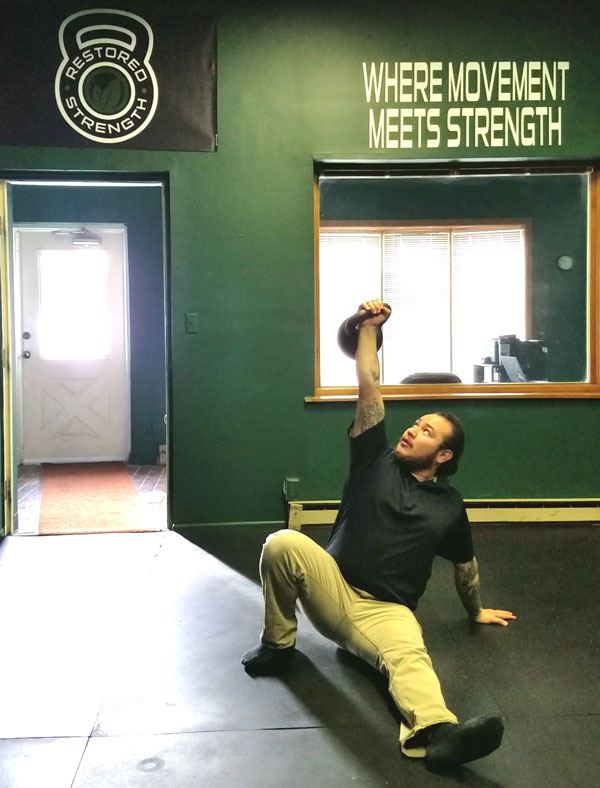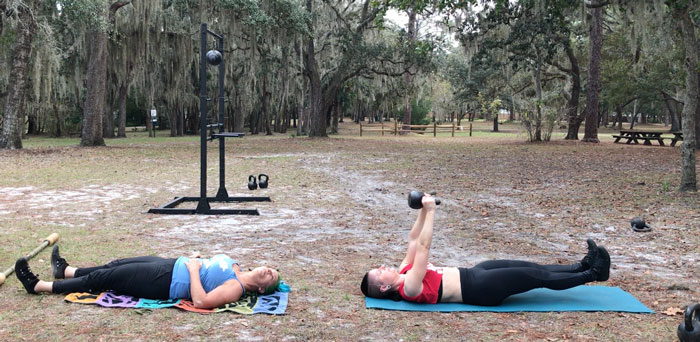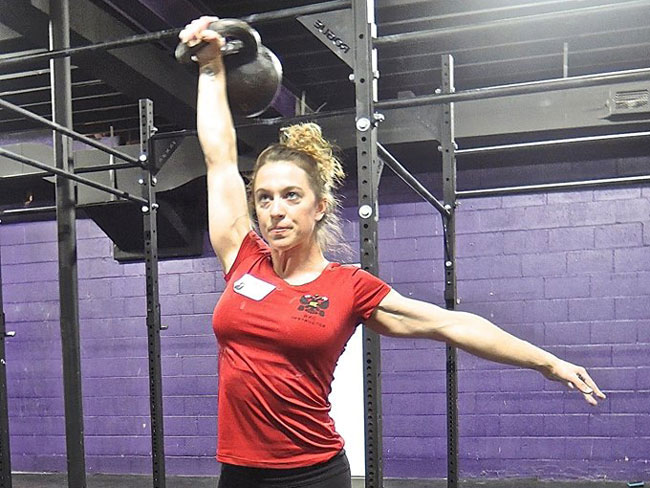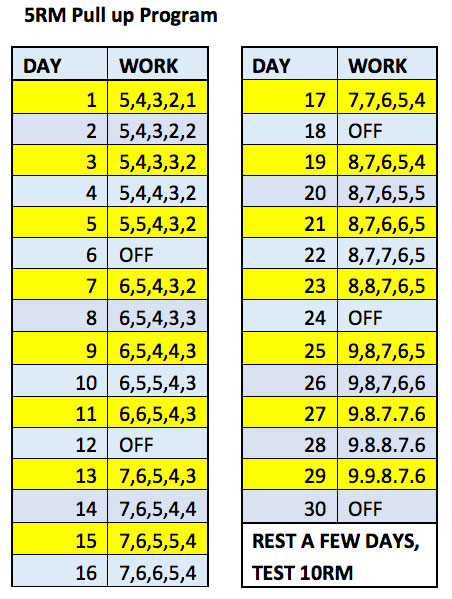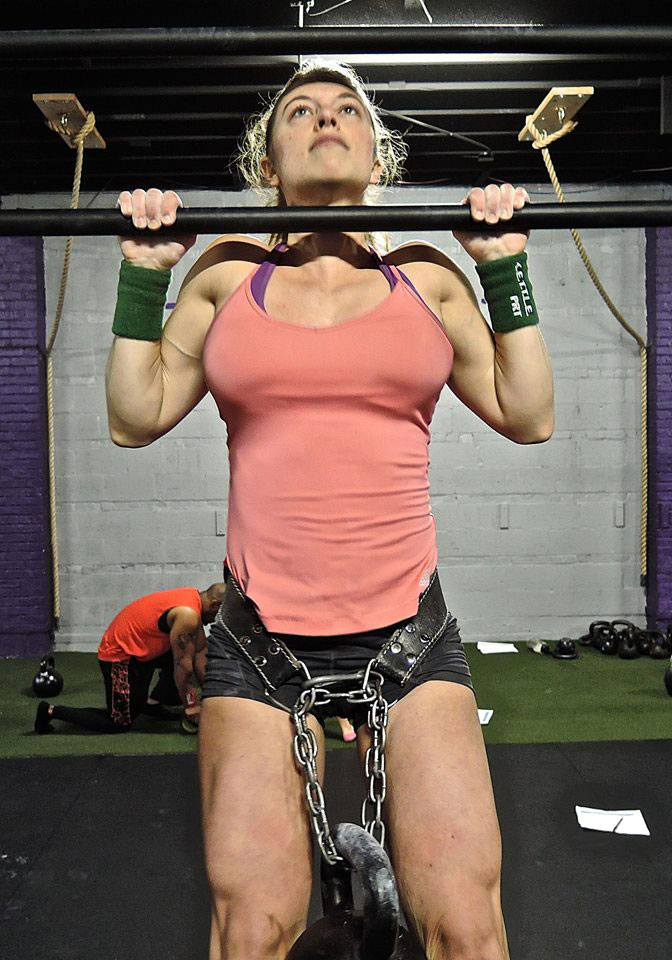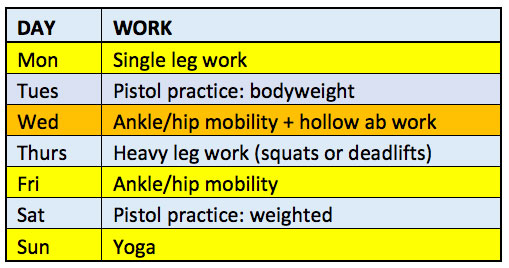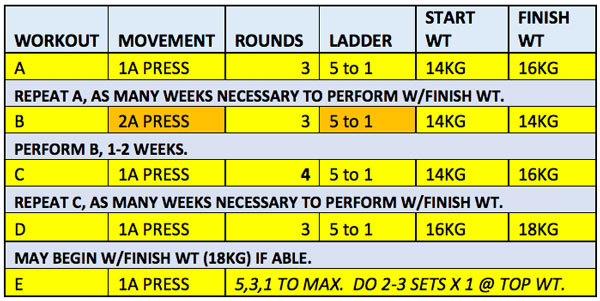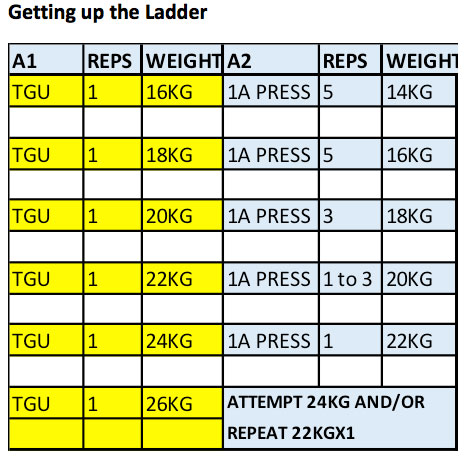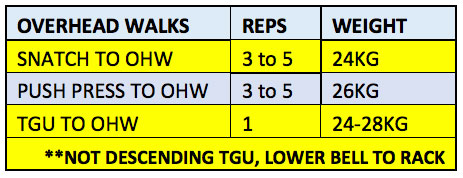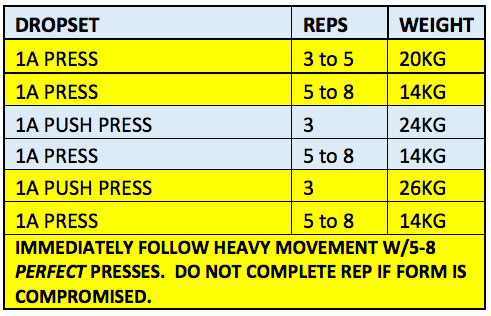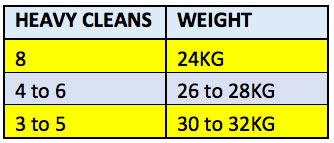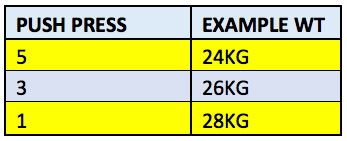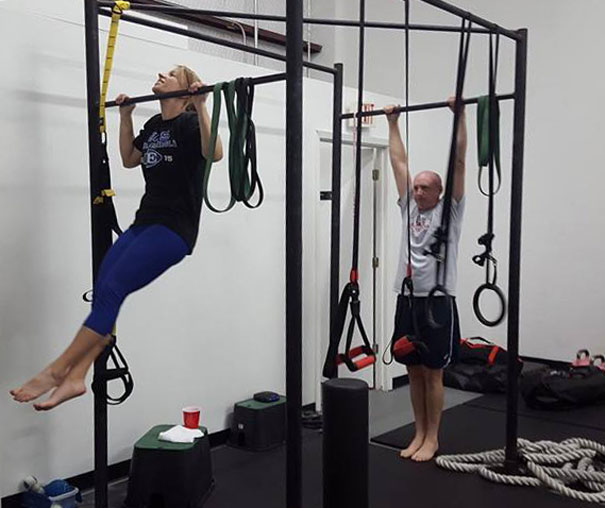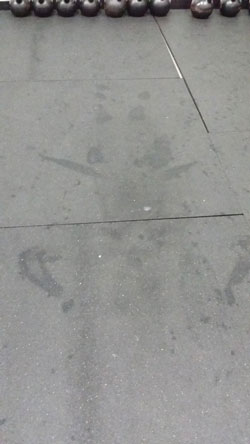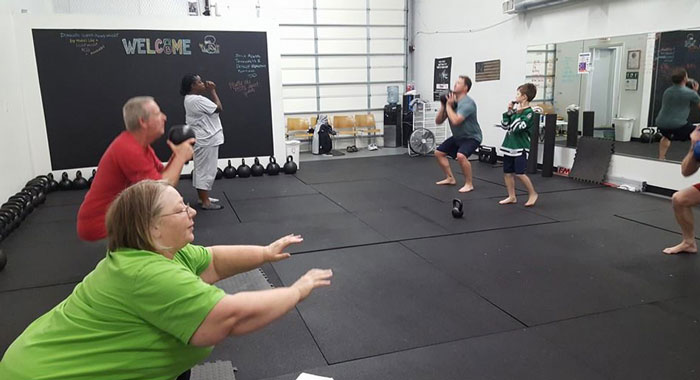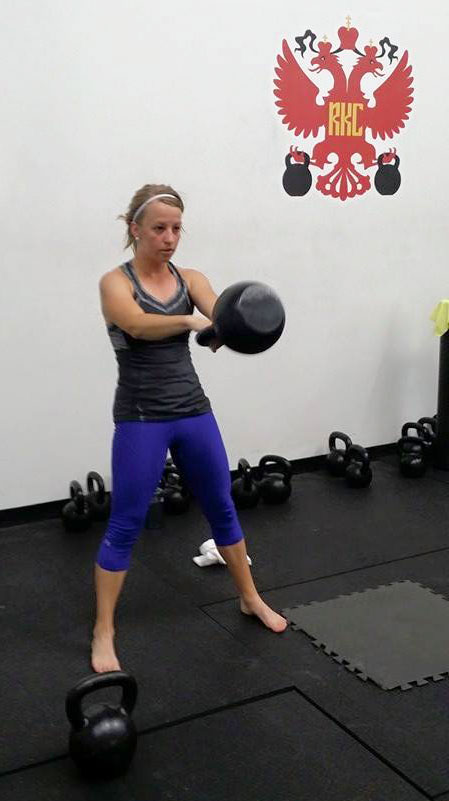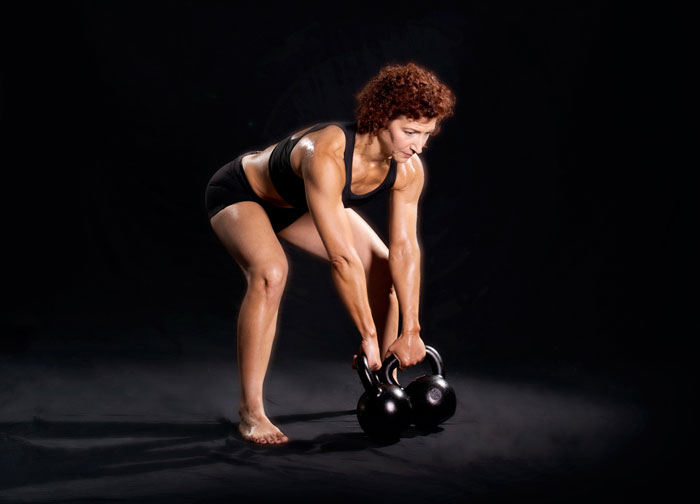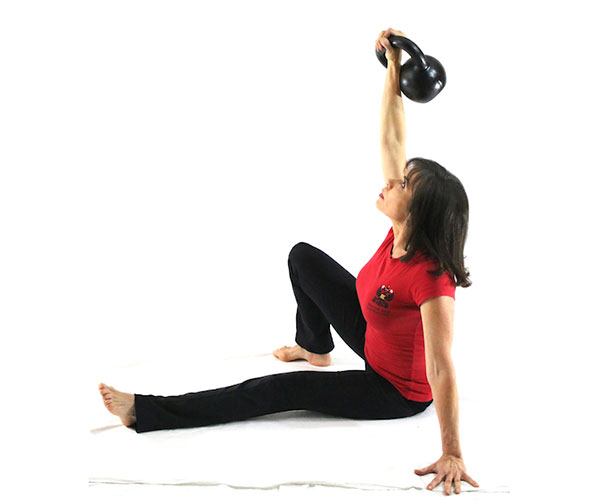
When in doubt, I pull John Jesse’s classic book, Wrestling Physical Conditioning Encyclopedia (printed in 1974), off my shelf. Jesse collected the history and wisdom of every strength, conditioning and wrestling coach and compiled it into a rare book that covers all the bases of strength training.
The first lesson one learns when reading Jesse is humility. In case you think YOU invented something, flip through the pages to find:
- Swings
- Sandbags
- Circuit training (including mixing bodyweight work with barbells)
- Rehab, prehab, tendon and ligament work
- And, many, many more ideas involving equipment, movement and training
- Oh…and the get-up
On page 154, we meet Otto Arco. He was the model for many of Rodin’s sculptures and we remember him for his skill in one particular exercise:
Arco, at a bodyweight of 138 pounds, could do a one hand get-up with 175 pounds. The get-up was his “secret” to all around body strength, body power and body composition. Arco wrote this in his book, How to Learn Muscle Control:
The main purpose of muscle control is self-mastery. Muscle control involves far more than the mere ability to make the muscles contract. It teaches you to relax, which is sometimes even more important than contraction. It gives you a selective control, and therefore the ability to single out those muscles necessary to the work to be done, and only those muscles; leaving the antagonistic, or non-helpful, muscles relaxed.
Arco, over a century ago, singled out the core and keys to the Hardstyle system: “selective control.” This is the ability to turn to stone when necessary and to relax…when necessary! It is the secret behind Bruce Lee’s one-inch punch and the ability to hit a golf ball far. We find the get-up in Jesse’s chapter 13, “All Around Strength and General Power Exercises,” where we also discover the ballistic exercises like the swing, the jerk and what we would now call “snatches” in the kettlebell world.
Arco maintained a honed physique that he modeled well into his sixties by focusing on an understanding of muscle-control. While the swing and goblet squat will illuminate the role of flicking the switch of hard/tight and fast/loose, the get-up will demand something best summarized by Jesse (155):
The athlete, in projecting his total body strength in competition, must mold the strength of localized areas into a total coordinated body effort.
The get-up, sometimes called the Turkish get-up was named after the great tradition of Turkish wrestlers using this move as an entrance test. It has enjoyed a rebirth in the new millennium due to the efforts of members of the RKC. At its simplest, the get-up is simply getting up off the floor with a load and returning back down. It can be done to exacting measures with fourteen or more separate steps up and fourteen or more back down. Somewhere in the middle is how we will teach the get-up.
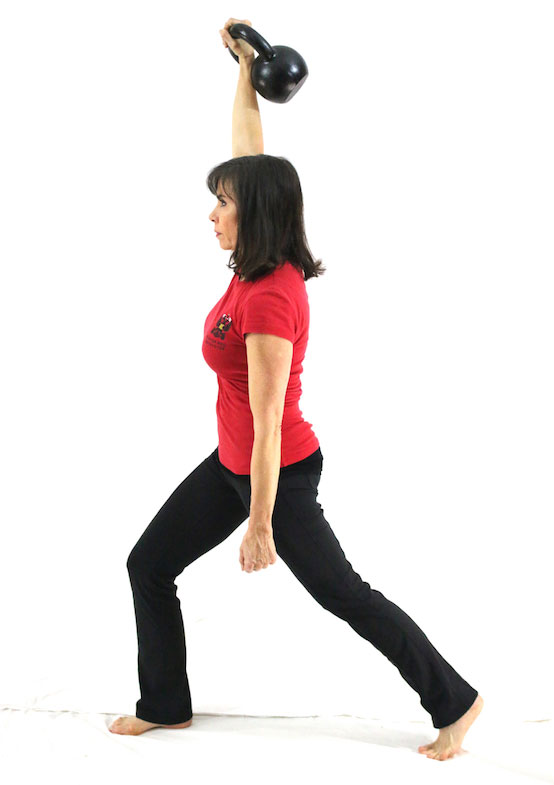
Although the true benefits are “a total coordinated body effort”, when you observe the get-up, you find that many isolation movements are present, too:
Basic rolling
Press
Hinge
Lunge
Loaded carry (waiter walk)
We also find the “four knots”. The hips and shoulders must be both tight enough and loose enough to roll, slide and adapt through the positions as we move from the ground to standing. Both shoulders are engaged during the full movement at a variety of angles and loading parameters. One needs to be tight and loose throughout as we flow through the positions.
The get-up teaches the ability to remain stiff and tense through movement. When discussing reps of the get-up, I always err on the side of fewer. There are two reasons:
- Safety is part of performance.
- Trashing doesn’t help tuning.
The first point is the key to the RKC Code of Conduct. Don’t trip over a kettlebell haphazardly left on the floor. Don’t let go of a swing and hit someone in the face with a kettlebell. Don’t go out of your way to be stupid just to become (in)famous on the internet.
Those are all tenants of the “safety is part of performance” idea. With the get-up, a kettlebell is held directly above your skull. The kettlebell will win in a collision, so don’t drop it on your head.
More to the point, the get-up teaches total body coordination and total body strength. Like the Olympic lifts—the barbell snatch and barbell clean and jerk—it takes a level of focus to perform a get-up correctly. A single heavy get-up reflects the training base of perhaps months or years to get the movement “right.” Like the Olympic lifts, one doesn’t see the months of training and preparation that allow one to perform—and, yes, perform is the right word—a heavy get-up.
I keep the reps low to insure concentration, focus and optimal performance. As an Olympic lifting coach, I rarely get over ten reps in either lift with good lifters. With the get-up, I have found that few people can maintain the high levels of mental and physical coordination beyond about ten reps, too.
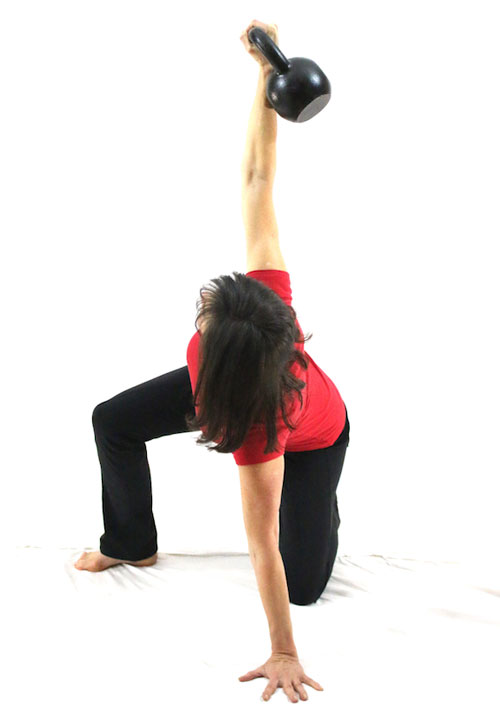
The second point is hard for many of our hard-charging brothers and sisters to understand: getting trashed is something a college freshman or someone who really doesn’t understand training does. I wouldn’t be surprised to see someone online doing Tabata get-ups some day (twenty seconds of get-up, ten seconds rest for four minutes) or some kind of “get-ups to failure.”
This kind of nonsense is an issue in the fitness industry. Sadly, it is what most people “hear” when we say the phrase “training session”.
Even though I want to make you move better and move more, most people’s ears tell them that I want you to puke in a bucket and lay in a sweaty mess on the floor.
No!
The get-up is all about tuning the body. The words “tune” and “tone” come from the same root. When we train people, we should be trying to tune them up. If you sit too much, stretching the hip flexor family and strengthening the glutes will do much more together.
When someone struggles in a get-up or cheats a position a bit, it tells us that something is going on today. I use the get-up and variations of it to access what is going on with a person that day. An unusual hitch in movement or a lack of mobility here or there can be addressed instantly if we see the get-up as a tuning exercise rather than a trashing movement.
Speed can mask problems. The get-up highlights weak links and poor linkage. My old training partner, John Price, used to always remind me, “An athlete is only as good as the weakest link.” The get-up is a different movement after a trip over ten time zones. The get-up is a different movement the day after an American football game.
But, a few minutes of intelligent corrective work, and tuning the body, allows us to get back into the game.
Stu McGill, the famous Canadian back specialist, offers trainers and coaches a challenge for every workout and program: after the exercises and rep scheme, write a column to explain why each exercise and rep is included.
When it is not included in a workout, we should ask why the get-up is NOT there.
***
Master RKC, Dan John is the author of numerous fitness titles including the best selling Never Let Go and Easy Strength. Dan has spent his life with one foot in the world of lifting and throwing, and the other foot in academia. An All-American discus thrower, Dan has also competed at the highest levels of Olympic lifting, Highland Games and the Weight Pentathlon, an event in which he holds the American record.
Dan spends his work life blending weekly workshops and lectures with full-time writing, and is also an online religious studies instructor for Columbia College of Missouri. As a Fulbright Scholar, he toured the Middle East exploring the foundations of religious education systems. For more information visit DanJohn.net
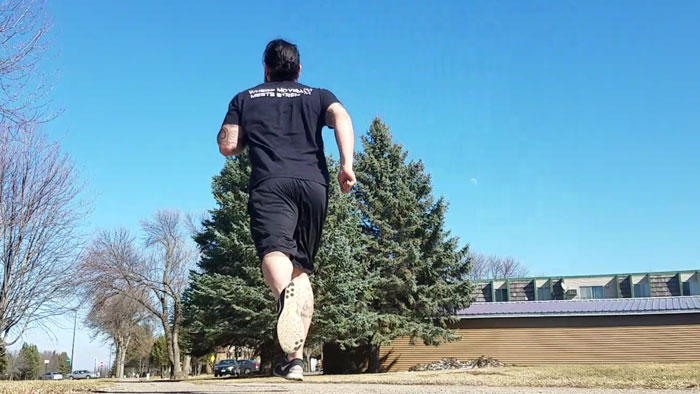
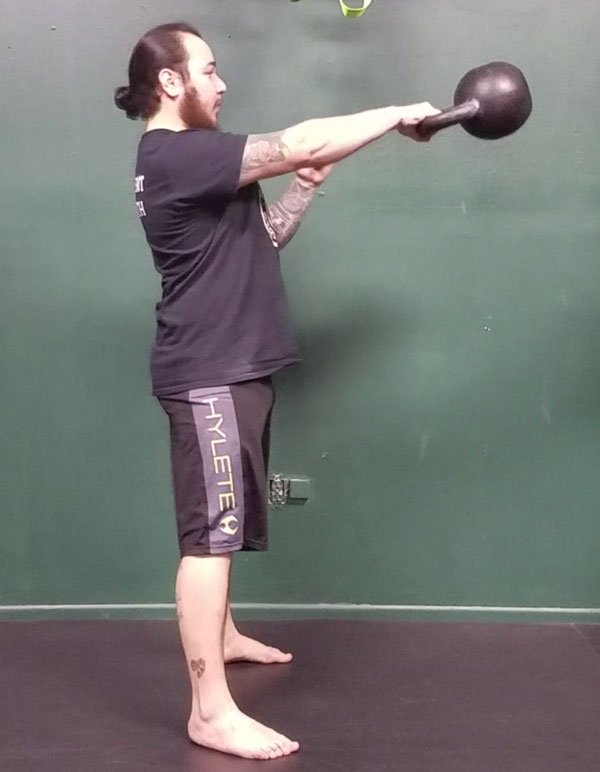
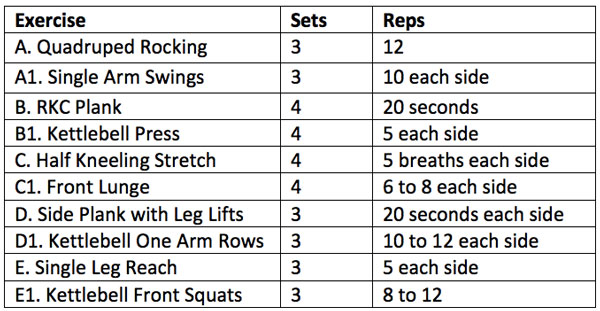
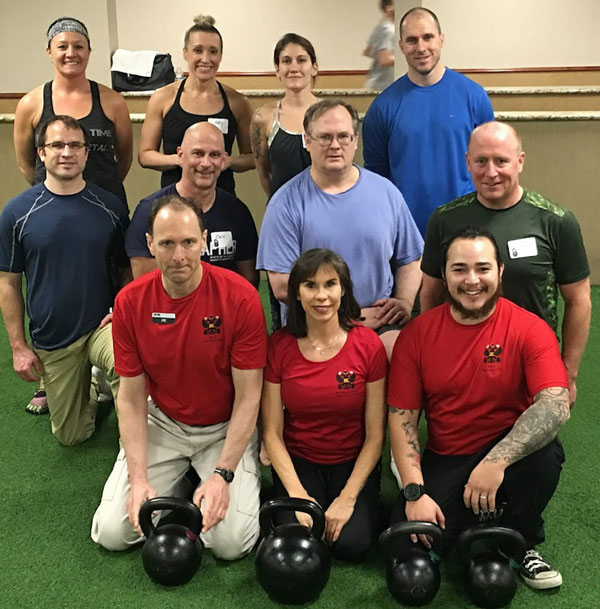
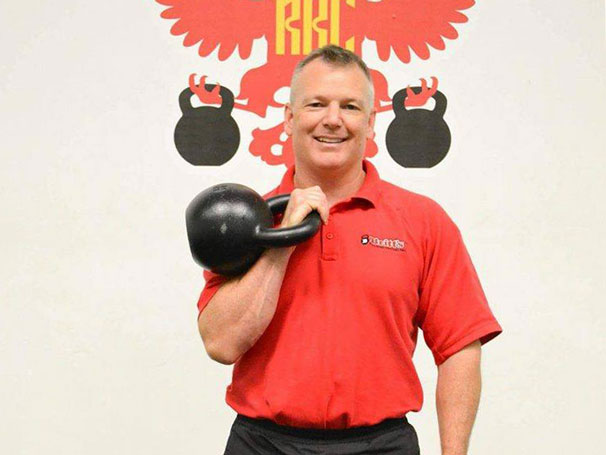
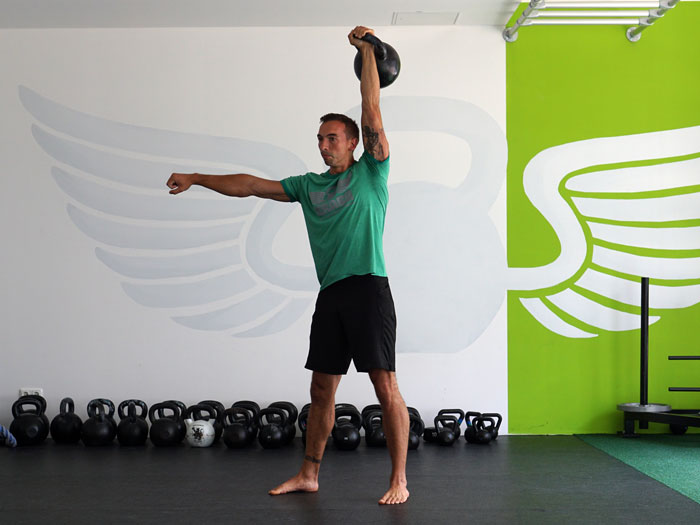
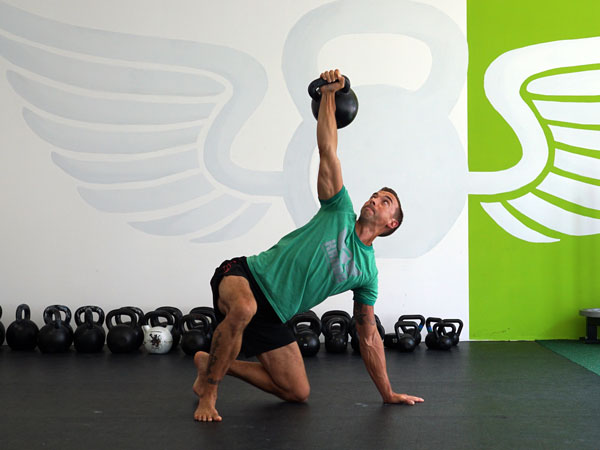

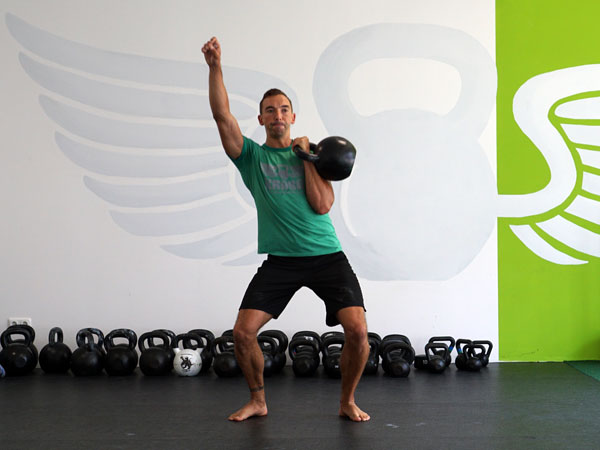
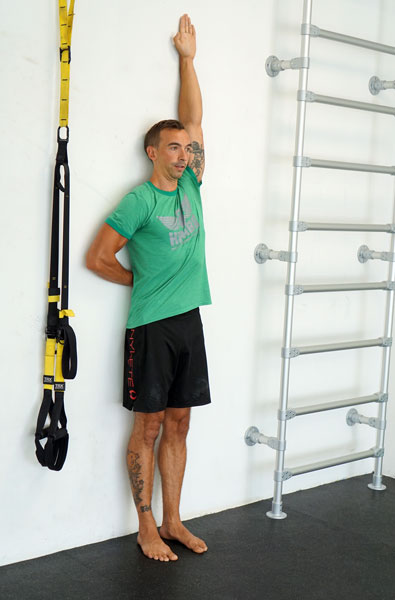
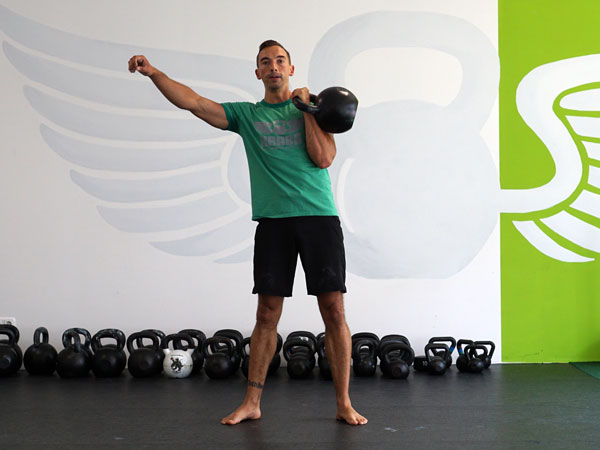
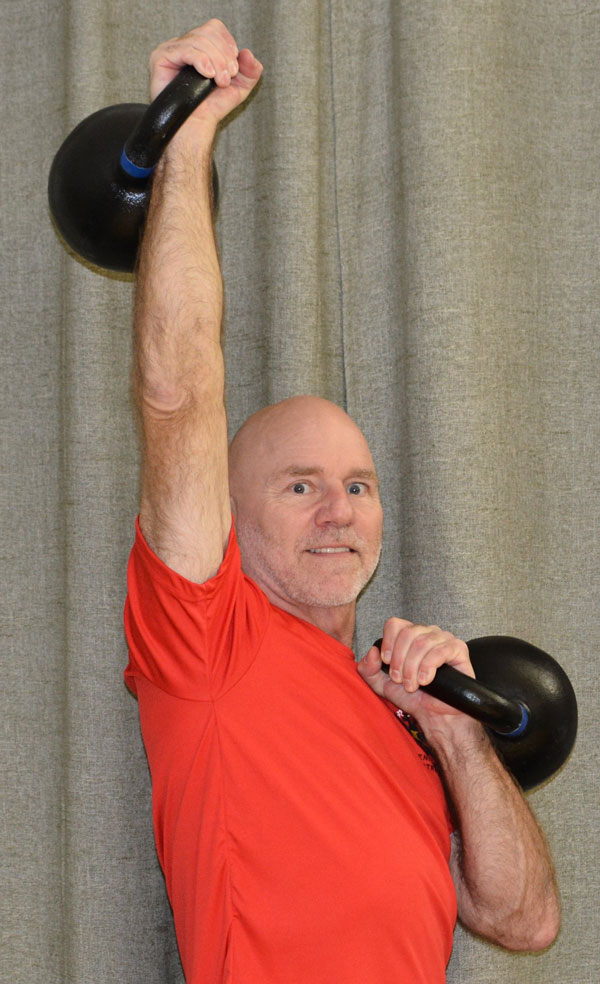

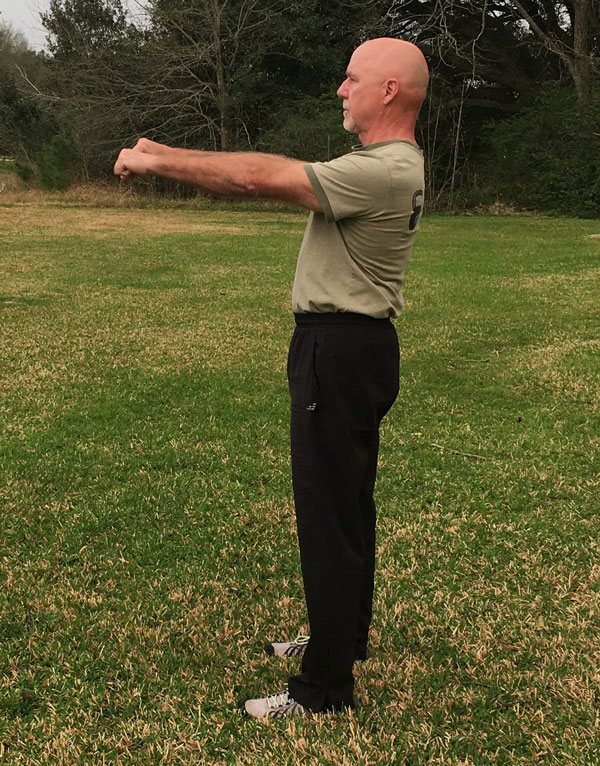
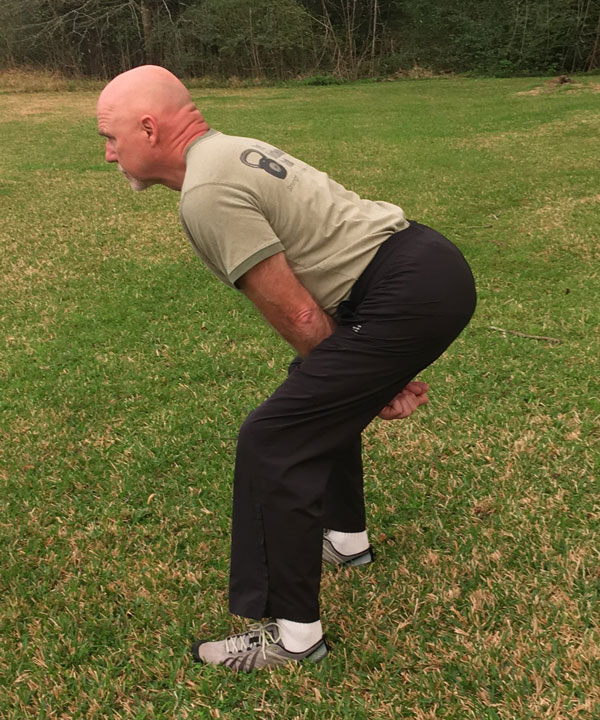
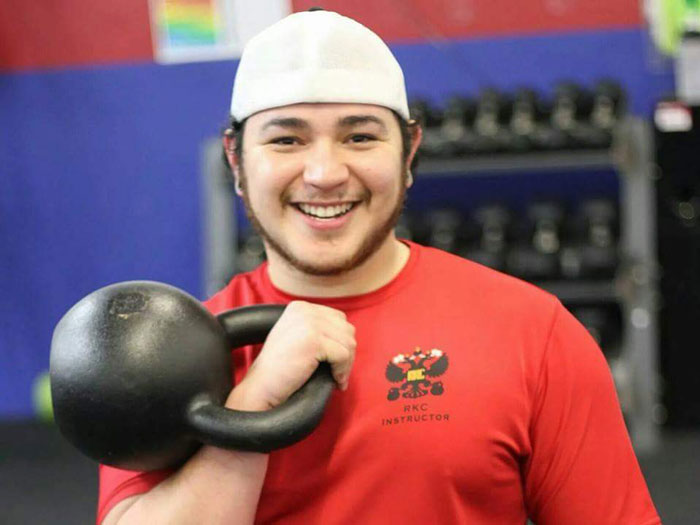
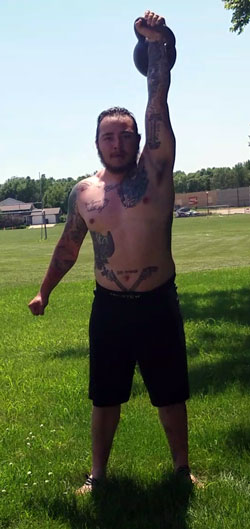 The RKC is known as the School of Strength because we educate candidates on how to teach strength to others. As we all know the
The RKC is known as the School of Strength because we educate candidates on how to teach strength to others. As we all know the 